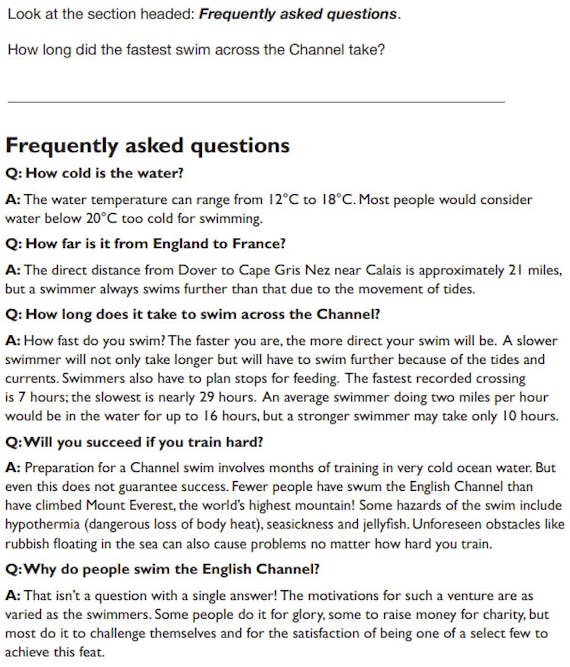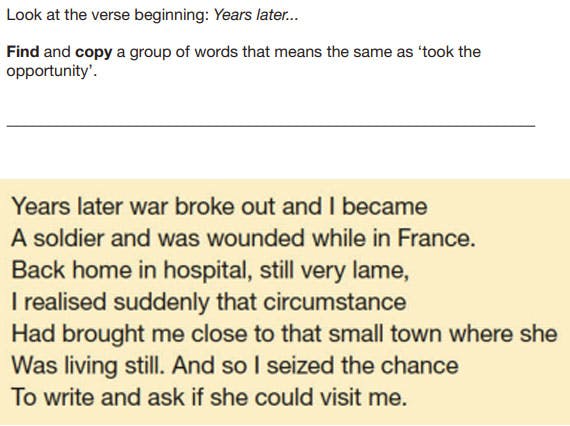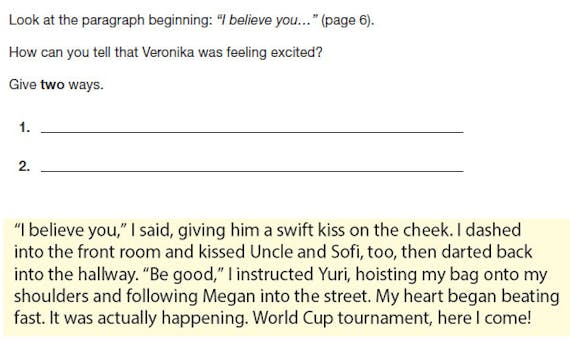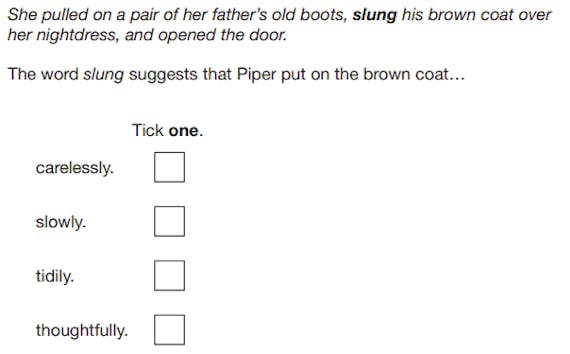KS2 SATs English Reading Revision - Popular Questions
Table of Contents
While it is true that English Reading SATs questions change each year, the curriculum, structure and format of the test remains the same.
Hence, while the topics and questions may vary slightly, a number of question types are repeated each year. The same is true with Maths SATs questions and Grammar and Punctuation questions.

KS2 SATs can be intimidating for children, but understanding how to tackle these common types of questions can help your child approach them more confidently.
Here we will talk about the English Reading SATs paper, the most common question types (that pop up year after year) and how to tackle them.
The KS2 English reading comprehension paper consists of:
- 3 separate texts (typically a non-fiction text and two fiction texts, either narrative or poetry).
- Around 10-15 questions related to each text.
- Each question only relates to one text (i.e. questions will never ask to compare between two different texts).
The reading tests will include many different types of questions specifically related to the texts chosen. However, these four areas have been regularly featured in SATs reading papers from 2016 onwards.
Fact Retrieval Questions
Fact-retrieval questions will always be included and form a significant portion of the marks available.
In fact-retrieval questions, children are asked to find and record a specific piece of information within the text. This information can be either directly stated or implied.
Examples include:
- 2016 KS2 English Reading: 8, 9b, 10, 11, 12b, 12c, 12d, 14, 18, 26a, 26b, 28.
- 2017 KS2 English Reading: 5, 7, 9, 12, 13, 16, 18, 19, 21, 22, 24, 39.
- 2018 KS2 English Reading: 1, 2, 4, 5, 7, 10, 11, 13, 17, 19, 21, 36.
- 2019 KS2 English Reading: 1, 3, 5, 11, 12, 13, 14, 19, 20, 22, 24, 25, 28, 33, 35, 36.
- 2022 KS2 English Reading: 1, 2, 3a, 4, 12, 13, 14 16, 17, 18, 20, 21, 22, 30a, 30b, 32a.
How to Answer Fact Retrieval Questions
- If directed to a specific part of the text, make sure you only look for the answer in that sentence or paragraph.
- First, scan the text for any words that may have been used in the question.
- Then, find the information you are looking for.
- Reread the question and check to ensure that the information you have found answers the question.
Example Fact Retrieval Question
Taken from 2017 KS2 English Reading SATs Paper, Question 22.

How to answer:
- Find the section titled 'Frequently asked questions'.
- Scan for the keyword 'fastest'.
- Retrieve the required information – 'The fastest recorded crossing is 7 hours'.
- Reread the question and check that the information you have found answers the question.
- Write the answer in the space provided.
Find & Copy Questions
These questions test children's understanding of vocabulary. Children are asked to find and copy a word from the text. They may be asked to find a word with a given meaning, a word that means the same as a given word (a synonym), or a word that shows what a character thinks or feels.
Examples include:
- 2016 KS2 English Reading: 1, 4, 25, 30.
- 2017 KS2 English Reading: 15, 17, 20, 25, 32.
- 2018 KS2 English Reading: 8, 12, 16, 20, 26, 32.
- 2019 KS2 English Reading: 4, 9, 21, 38.
- 2022 KS2 English Reading: 6a, 8, 26.
How to Answer Find & Copy Questions
- If directed to a specific part of the text, make sure you only look for the answer in that sentence or paragraph.
- Look for a word or phrase that may be suitable.
- If possible, try replacing the word/phrase you have found with the one used in the question.
- If the word/phrase fits, it is likely correct.
- Record your answer in the space provided.
Example Find & Copy Question
Taken from 2018 KS2 English Reading SATs Paper, Question 20.

How to answer:
- Look for the verse beginning 'Years later...'
- Read the verse through.
- Look for a word or simple phrase that could be replaced with 'took the opportunity,' e.g., '...seized the chance'.
- Reread the verse but substitute the phrase you have found with 'took the opportunity'.
- If it fits and makes sense, record the words in the space provided.
Inference Questions
Inference questions offer another large proportion of marks in KS2 SATs English reading tests.
Inference questions are often the most challenging of question types because they determine whether children can 'read between the lines' and infer information without it being directly stated.
Plenty of children struggle with inference questions but with a bit of practice they will begin to understand both what to look for and how to tackle them.
For example, children may be asked to infer how a character may feel and will often be required to offer a small piece of 'evidence' from the text to support their answer.
Children are usually directed to a specific part of a text to find their 'evidence'. Inference questions can be worth up to 3 marks.
Examples include:
- 2016 KS2 English Reading: 3, 6, 9a, 13, 15a, 15b, 17, 19, 21, 24, 32.
- 2017 KS2 English Reading: 2, 3, 4, 10, 23, 26,30, 31b, 33, 34, 35, 36, 37, 38.
- 2018 KS2 English Reading: 3, 15, 18, 23, 24, 25, 26, 27, 29, 30, 32, 37, 38, 39, 40.
- 2019 KS2 English Reading: 2, 6, 7, 15, 16, 23, 27, 30, 31, 32, 34, 39.
- 2022 KS2 English Reading: 3b, 5, 6b, 7, 9, 19, 24, 25, 27, 28, 29, 31, 32b, 33, 35.
How to Answer Inference Questions
- If directed to a specific part of the text, make sure you only look for the answer/evidence in that sentence or paragraph.
- Read the text carefully and consider what the characters are doing or saying and what that might indicate.
- For 1-mark and 2-mark questions, look at the word or evidence you have been given. Think about how characters are acting or what they are saying. For example, if you are asked how a character feels, look at that character's words and actions. If they are smiling and making jokes, it's likely that they are happy; If they are hiding and whispering, they may be anxious etc.
- If asked for evidence, choose it carefully and ensure it relates to the question.
- Write the evidence as a quote or paraphrase of the text.
- If more than one piece of evidence is requested, look for two different pieces of evidence, i.e., how a character moves and what they say, rather than focussing on just one aspect.
- For 3-mark questions, always offer at least two points or suggestions and evidence to support your points.
Example Inference Question
Taken from 2022 KS2 English Reading SATs Paper, Question 7.

How to answer:
- Look at the text for clues that show the character is excited, such as how she acts and moves, what she says and how she is described. E.g. 'My heart began beating fast.' and 'It was actually happening. World Cup tournament, here I come!'. She is 'darting and dashing' around.
- Choose two pieces of evidence, e.g. 'She moves quickly darting and dashing' and 'her heart was beating fast'.
- Record your evidence in the space(s) provided.
Summary
- Read with your child and explore vocabulary.
- For reading papers, practice finding 'evidence' to support your answers.
- The English Reading SATs paper features four question types that reliably come up every year.
- These four question types are: fact retrieval, find and replace, author's word (or language choice) and inference.
- By reading our answering strategies and example answers, your child can improve their answering technique, scoring more in their KS2 English Reading SATs paper.
- Practise makes perfect for English Reading so make sure your child tackles plenty of practice English reading SATs questions.

